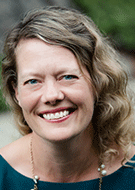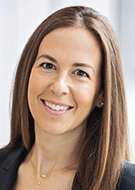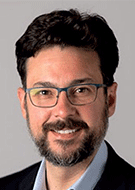Grassroots Efforts Can Make Greener Radiology a Reality
Initiatives to create and maintain sustainable radiological practices can start small and then gain momentum




How can one radiologist make a difference when it comes to sustainability? Start by talking with a colleague about it, according to Beth Zigmund, MD, an associate professor of radiology at the University of Vermont in Burlington.
“There are many people in health care who are passionate about addressing climate change, environmental degradation and the associated mounting health impacts,” said Dr. Zigmund, a member of several organizations focused on helping protect the environment and author of a Journal of the American College of Radiology article on sustainable practices in radiology.
“Talking about climate change can draw potential partners out of the woodwork,” she said. “Discussions focused on the shared values of quality patient care, efficiency and cost savings— all of which go hand in hand with sustainability efforts—can spark interest and support from colleagues and leadership.”
According to Kate Maturen, MD, MS, clinical professor of radiology at the University of Michigan and associate chair for ambulatory care and strategy, individual radiologists should begin their involvement with conservation within a scope that is manageable, and in an area where they may have some influence.
“Could you impact choices about printed materials vs. electronic copies, or composting at departmental meetings and events?” Dr. Maturen asked. “Could you push for unused workstations to be fully powered off at night? Are you involved in MRI purchasing decisions? If so, can you ask for partnership and accountability from vendors? It’s really about each of us looking around at our work ecosystem to see where change could happen and where we are well positioned to be advocates.”
Dr. Maturen is also a member of the RSNA Sustainability Task Force (See below for more information about the task force.) and is a coauthor of a JACR civil discourse opinion piece on how to engage radiologists to build more sustainable radiology practices.
Dr. Maturen advises radiologists to build consensus within their departments and seek to work with others in the organization at large.
“There are almost certainly groups forming somewhere in the organization—whether academic or corporate—devoted to climate or carbon neutrality,” she said. “These collaborations have a multiplier effect. They provide support and motivation for participants, enable the sharing of ideas and best practices and create louder collective voices to influence change.”

The Power of Multidisciplinary Efforts
The best advice about how to make sustainability a focus is just to start, according to Hayley Panet MHSc, CHE MRT(MR), senior manager Joint Department of Medical Imaging at University Health Network in Ontario, Canada. Panet was involved in her institution’s creation of a multidisciplinary green radiology leadership team. She presented the work at an RSNA 2023 session.
“Creating the opportunity for discussion and open feedback is essential for grassroots opportunities for energy conservation and green radiology,” she said. “Idea generation from expert users is a key component of creating sustainable and meaningful engagement.”
The institution’s main goals have been focused on creating the infrastructure to drive green radiology and sustainability initiatives.
“Creating a dyad leadership model with hospital administration and radiologist has been so effective for learning and implementation,” Panet said. “Working closely with Kate Hanneman, MD, MPH, FRCPC, associate professor and deputy lead of sustainability at the University of Toronto has identified synergies for innovation and research in collaboration with hospital operations and stewardship.”
To measure progress, the group is collecting and analyzing energy utilization across modalities and the fleet of equipment.
“Also, we are developing a staff survey to assess education and engagement, both before and after change implementation,” she said.
According to Panet, all members of radiology departments—including technologists, administrators and radiologists—can engage and work together to improve sustainability.
“The more conversations, meetings and publications we have about sustainability practices and green initiatives, the more it will elevate discussions and promote and highlight opportunities for meaningful change,” she said.

Small Beginnings Can Lead to Significant Change
Working to protect the environment can feel daunting, Dr. Maturen noted.
“We often feel powerless in the face of climate change,” she said. “But the incredible thing about working in a large organization is that if you are able to make even a tiny change, it can have a very large impact as you propagate it across an entire department or health system.”
“Efforts by small groups of people can help catalyze broader action,” Dr. Zigmund said, noting the importance of “partnering with and leveraging the expertise of non-radiologist stakeholders such as technologists, facilities managers, vendors and information technology professionals.”
She recommends getting involved with organizations focused on the need for action on climate change and environmental sustainability. That way interested radiologists can connect with networks of physicians who are already engaged.
“Expecting more of ourselves and our leadership—both within and outside our practices and organizations—will be critical if we are to mitigate and adapt to increasing climate-related damage and health threats,” she said. “Fortunately, there’s a roadmap for action in health care and a wide variety of opportunities for radiologists to get involved.”
For More Information
Access the study in the Journal of the American College of Radiology.
Access the civil discourse paper in the Journal of the American College of Radiology.
Read an RSNA News article on Panet’s RSNA 2023 Annual Meeting session, Creation and Impact of a Multidisciplinary Green Radiology Leadership Team.
Read a three-part RSNA News series on health care and climate change:
Effective Tips to Reduce Radiology’s Carbon Footprint
RSNA Sustainability Task Force Charged With Mitigating Imaging's Impact on the Environment
RSNA recently established a Sustainability Task Force that is charged with creating a prioritized plan for addressing environmental sustainability in the field of radiology that aligns with RSNA’s mission of promoting excellence in patient care and health care delivery through education, research, and technological innovation.
Christopher Hess, MD, PhD, chair of the task force and professor and chair in the Department of Radiology & Biomedical Imaging at University of California, San Francisco, said the task force will identify initiatives that can reduce the environmental impact of medical imaging and address environmental sustainability in the field of radiology.
“Our plan is to conduct a landscape scan of the sustainability and climate change-focused efforts that currently exist in the field of medicine and imaging to inform these recommendations, which we will report back to the RSNA Board of Directors in December 2024,” Dr. Hess said.
The group will focus its recommendations on four key pillars: research, education, collaborations with imaging and industry, and assessing gaps and opportunities in the landscape of current sustainability efforts in medicine.
“The task force will convene virtually multiple times throughout its one-year charge to produce a prioritized plan recommendation report to the Board,” Dr. Hess commented. “The work is divided into different strategic domains where the RSNA is anticipated to have the greatest impact and influence. Subgroups of the task force are working in each of these domains, which will be consolidated in preparation of the final report.”